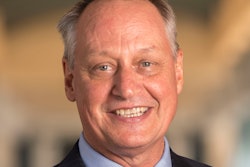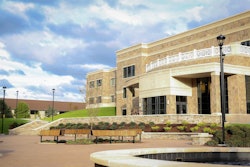In 1978, when Uri Treisman first created the Mathematics Workshop
at the University of California-Berkeley, he was trying to solve a
local problem: although there were very few African American and
Hispanic students in the freshman calculus class, those who were
enrolled were barely scraping through — when they managed to get
through at all.
Calculus is critically important because it is the “gateway” to all
the technical majors, including engineering. And the need for a
technically sophisticated workforce is even greater today than it was
twenty years ago when Treisman. now a professor of mathematics and
director of the Charles A. Dana Center at the University of
Texas-Austin. originally conducted his research.
Before constructing a program, Treisman spent a year and a half
studying in depth the lives of freshman calculus students to be sure
that he understood the nature of the problem. What he found about the
sources of these students’ academic failure ran counter to the
conventional wisdom of the time.
His research revealed that tile source of difficulty was not — as
was commonly assumed — lack of student motivation, poor high school
preparation, or socioeconomic background. Rather. the difficulty was
the students’ social and academic isolation on campus.
But Treisman did not stop at understanding the nature of failure.
He went on to examine what it would take for students to succeed. He
then built a program that would counter their isolation and support
their academic success.
A critical aspect of this program — now widely disseminated and
known variously as the mathematics workshop program, the Emerging
Scholars Program (ESP). MathExcel, and other locally determined names
— is its base within an academic department. While an institution’s
student-retention initiative may help students stay in college,
Treisman was convinced that such broad programs would not produce
mathematicians Rather, he knew that to develop students with a real
affection for the content area requires the involvement of the faculty.
Thus, two strengths of ESP are its academic focus and its strong
faculty engagement.
Over the years, students at such programs around the country have
indeed succeeded. ESP defines student academic success as a grade of A
or B, which will enable students to succeed in subsequent mathematics
courses. A 1990 study spanning ten years of the UC-Berkeley program
showed that more than two-thirds of its workshop students earned grades
of B or better. A 1998 study examining the first ten years of student
participation in ESP at UT-Austin reveals that more than three-quarters
of ESP students earn A’s or B’s. These results have been replicated by
students in similar programs at universities across the country.
What is it that supports this student success? The Emerging
Scholars Program is built around two interconnected strategies:
fostering a community of students around shared academic and career
goals: and intensifying academic instruction.
Through these strategies, ESP makes explicit what students need to
do to succeed in calculus — and, more broadly, at the university. The
program is relentlessly challenging in academics while offering support
in personal ways. While ESP is built around mathematics, the program
also recognizes importance of addressing nonacademic issue that are
part of the transition to higher education.
Frequently, students who succeed in high school mathematics do so
by memorizing formulas and getting the right answer quickly. But those
skills will rarely help a student succeed in college level calculus.
ESP is designed to help such students by shifting their belief that the
things they do well, they can do easily to an understanding that in
order to do some things well, it is necessary to work hard.
There are, of course, cautions to remember when we discuss one
program and the role it plays in student retention — or, as we prefer
to describe it, in supporting student persist race. First, no program,
no matter how wonderful, can simply be “cloned” to another campus. The
basic structures and strategies of a program have to be taken apart and
reconstructed to it the local environment. Second, programs alone are
not enough to address the complex issue of student persistence.
Over the last ten to fifteen years, higher education has learned a
lot about what makes student retention programs successful. As with
Treisman’s original study, it is necessary to understand in depth the
problem of student attrition before constructing or importing a
solution. Each campus needs to create a comprehensive plan, based on an
analysis of local data, which builds on the campus’ acknowledged
strengths and which addresses its own particular needs. This plan may
incorporate multiple approaches, including campus-wide,
dormitory-based, and departmental programs.
Encouraging student persistence is far too important a
responsibility to be delegated to a single campus office. Individuals
in all parts of the university — and in the broader community, as well
— should contribute to helping all our students persist and succeed in
higher education.
Dr. Rose Asera Director of Research and Evaluation Charles A. Dana Center, University of Texas-Austin
COPYRIGHT 1998 Cox, Matthews & Associates
© Copyright 2005 by DiverseEducation.com





















